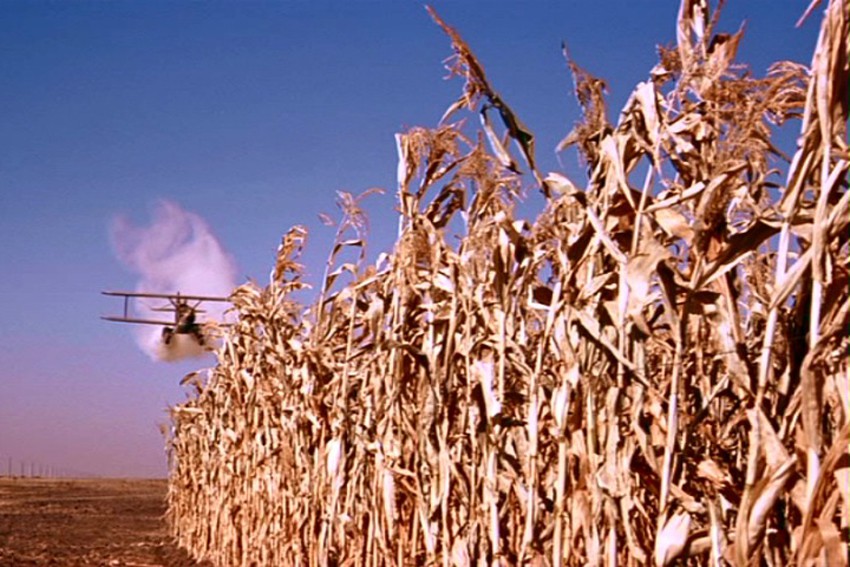Children of the corn

So perhaps Children of the Corn might be apposite after all – both as a celebration and as a caution.
Nobel peace laureate Rigoberta Menchu describes a baptism in her native Guatemala. The infant is wrapped in a baptismal gown so that she can hardly be seen, only her hair shows like the silks of a maize cob. “And then the child is told about maize … The child is told that it shall live from maize and that it is made from maize, for her mother ate maize while the child grew in her womb. The child is instructed to honour the maize.” Maize was, and remains, fundamental to much of Central America’s society and culture as well as to food security. Columbus’s first or second voyage allowed maize to reach Europe as part of the so-called Columbian Exchange. The value of maize was quickly recognised and cultivation spread rapidly and widely. At this year’s Royal Agricultural & Horticultural Society (RAHS) Show, the Botanic Gardens of South Australia joined the Yellow Brick Road to distribute True Gold heirloom sweet corn seeds provided by The Diggers Club. In past years, the Gardens’ City Crop at Adelaide Botanic Garden has profiled wheat and barley (last season’s collaboration between Coopers and the Lobethal Bierhaus is soon to present Botanic Ale). This year, the Gardens’ presence at the Show celebrated the RAHS’s 175th anniversary and, in collaboration with ElectraNet and the RAHS, invited children into the Gardens to plant and harvest our next City Crop and to highlight the significance of corn locally and globally. So, the Gardens are to have our own ‘children of the corn’ involved in planting, growing and harvesting our crop. The benign interpretation we cherished for this slogan was dispelled when Stephen King’s eponymous stories were brought to our attention (I can’t bring myself to watch the fi lms but the descriptions are appalling enough). The City Crop heading will have to suffice. The success of maize (or corn) cultivation since the Columbian Exchange is remarkable; Michael Pollan wryly observes that we are “processed corn, walking”. The description is now more literal than the poetics suggested by Rigoberta Menchu’s indigenous K’iche’ people during the baptism ceremony. In the US, the major crop is now Dent corn (often described as Number 2 corn), a crop that’s rarely eaten as such. Dent corn is processed. The processing begins by soaking the kernels in water and sulphur dioxide to allow the starch to be softened. Corn oil from the germ (or embryo of the seed) is then separated in a crushing mill, the seed fibre separated on a screen and the remaining gluten and starch from the seed endosperm is separated in a centrifuge. The starch is then processed for animal feed and processed foods, or chemically transformed into smaller sugars such as glucose and fructose for sweeteners or even ethanol for fuels. So, in the US at least – where cattle and chickens are fed a diet almost entirely comprised of corn – meat, dairy and eggs are largely reprocessed corn, and in processed food, the sugars and carbohydrates are likely reprocessed corn. Americans at least are indeed “processed corn, walking”. A high reliance on corn does raise concerns. The FAO (Food and Agriculture Organisation of the US) reckons that of 50,000 edible plant species in the world maize, rice and wheat make up 60 percent of the world’s food energy intake. Certainly a single crop facilitates high yields and industrialisation of processes for cropping and harvest. On the other hand, monocultures are inherently precarious – while we’ve been successful in managing threats to date, the consequences of massive crop failure through disease or other risk would be devastating. Moreover, while the transformation of the corn crop through breeding and genetic modification has increased yield, the consequent changes in proteins, including glutens, may well be driving increasing reporting of gluten intolerances and other food safety concerns. Perhaps most seriously, processed corn in the form of processed carbohydrates and sugars represents a significant constituent in the processed foods seen to be driving an obesity epidemic. Australia isn’t the US – corn production in Australia is small, producing 0.6 percent of total world production, compared with the US, which is responsible for about 43 percent (in significant measure as a result of government subsidies for corn production). Nevertheless, Michael Pollan’s critique, in both The Omnivore’s Dilemma and In Defence of Food, of our reliance on a few food sources and our predilection for processed food is just as relevant to Australians. So perhaps Children of the Corn might be apposite after all – both as a celebration and as a caution. If you, or your children, are interested in the City Crop you can subscribe to the City Crop e-Newsletter or read the City Crop blog environment.sa.gov.au/botanicgardens/Whats_on/Events/city-corn-crop If you’re interested in fermented corn as bourbon – that’s another story.